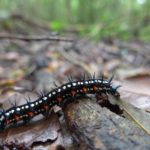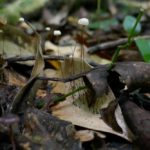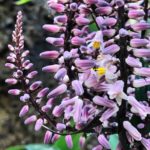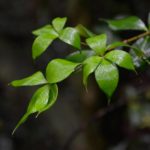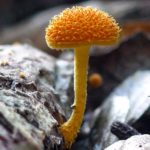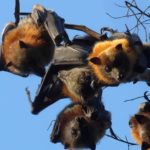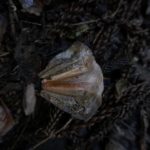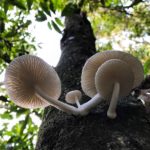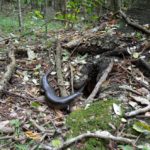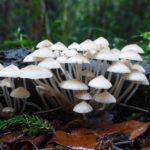Hoop Pine
Survival: Rotary Park Style
This magnificent tree draws us to it again and again. It is a place for pause, contemplation and wonder on our weekly pilgrimage to Rotary Park Rainforest Reserve.
This tree is a towering Hoop Pine, Araucaria cunninghamii, one of the largest amongst many in this six hectare pocket of dry and subtropical rainforest in the middle of Lismore, in the far northeast corner of New South Wales. Each week we walk the short circuit through this Reserve in an attempt to get to know the place where we live from a different point of view, timescale and set of relationships: the point of view of a rocky, creek-carved fold that transits between a volcanic plateau to the Lismore flood plain; a timescale that extends beyond one human lifetime and beyond the time of humans; and a set of relationships between forest, country and people that have made and make this place.
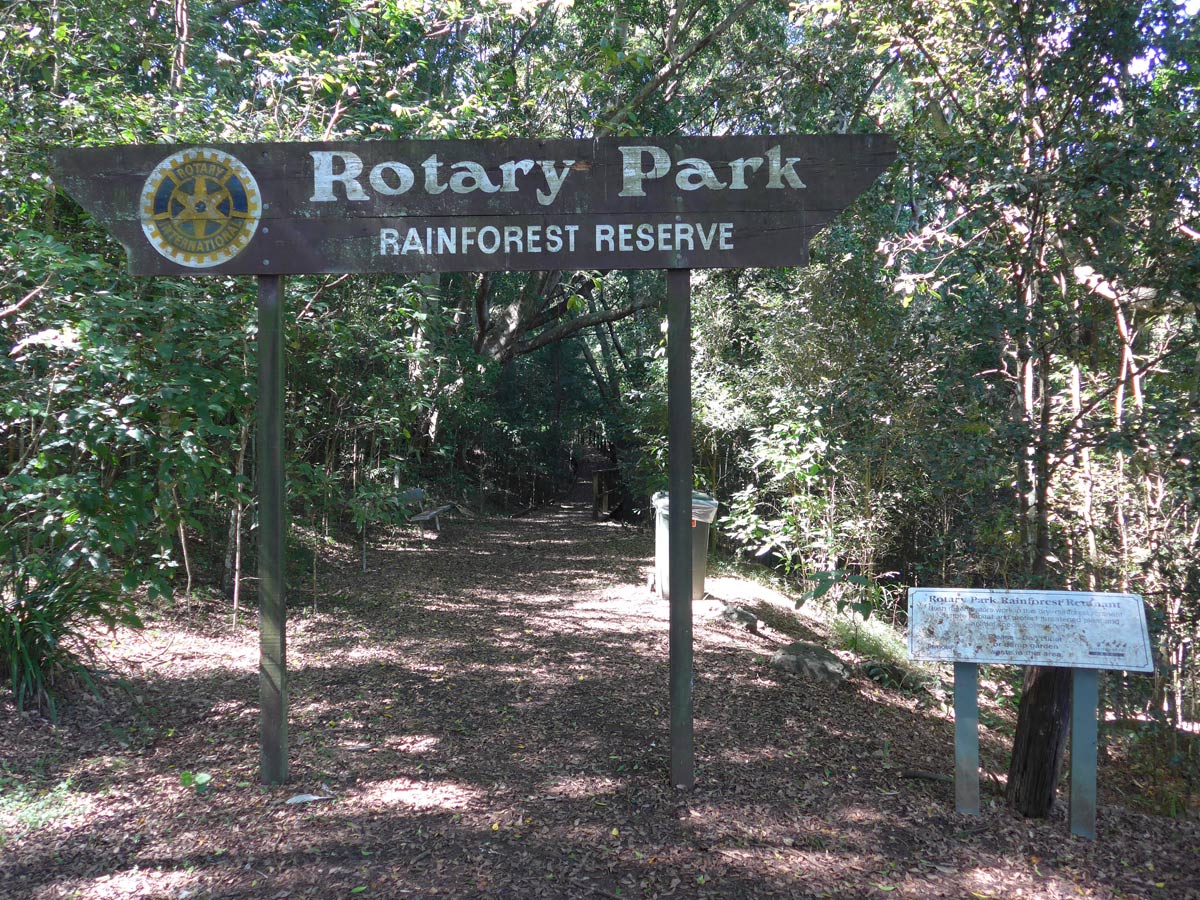
Hoop Pines come from a long lineage of non-flowering trees, the Araucariaceae family. If we could go back 150 million years we would be strangers on the pre-human and pre-dinosaur Earth but we would recognise the form of the ancestors that preceded the present-day Hoop Pine. These trees were part of the rainforest that covered much of Gondwana, the supercontinent from which Australia was formed.
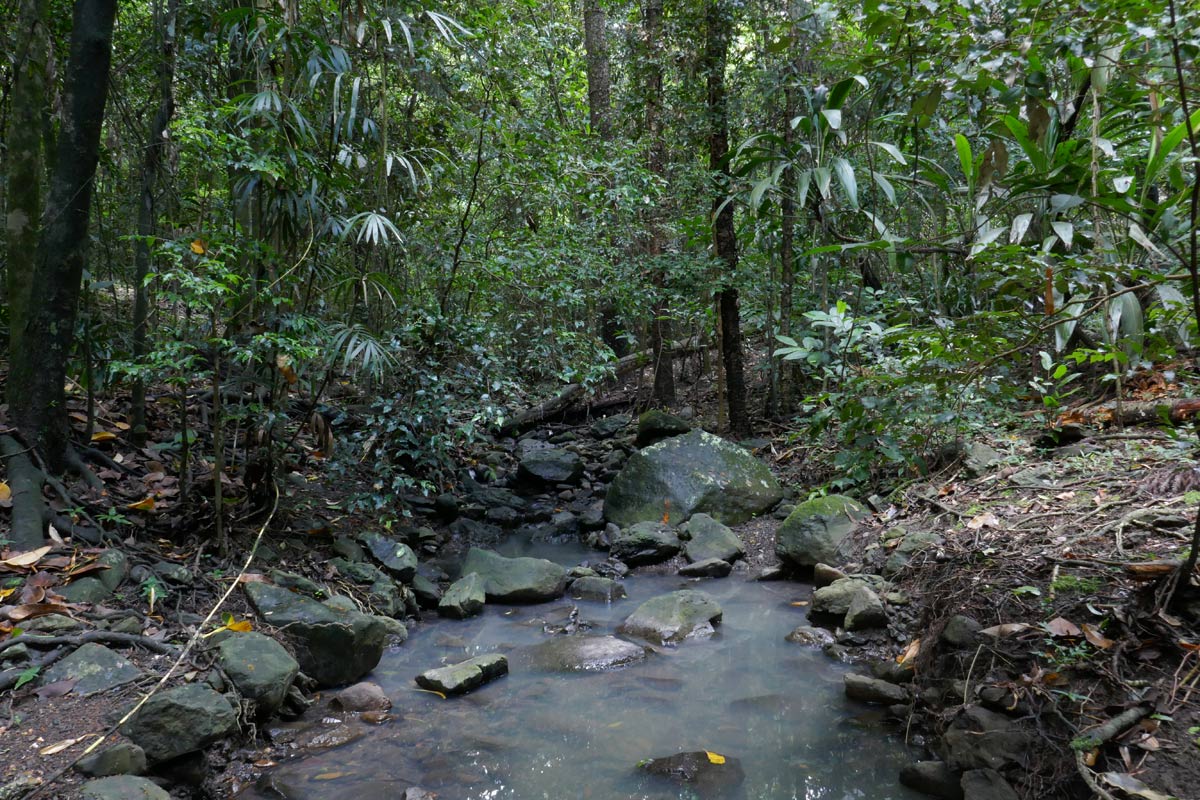
The Gondwanan sub-continents went their separate ways 40 million years ago and in our neck of the woods drifted north. As the Earth’s climate changed and Australia became more arid, the rainforests clung on around the east coast and this Hoop Pine’s ancestors evolved. Up to only 160 years ago in this corner of New South Wales, one of the largest of these rainforest areas was thriving. We are standing here, with this tree, on the western edge of its extent. The Hoop Pine is a signature tree that names the ecological type of the Rotary Park rainforest, the Araucaria sub-alliance.
The Widjabul people of the Bundjalung nation know the huge rainforest as gabul. Bundjalung culture grew in an inseparable relationship with this land and its more-than-human inhabitants, including a deep ancestral relationship between Widjabul people and the Hoop Pine. The story of this relationship is not ours to know or tell.
This place where this Hoop Pine stands is also significant in Widjabul lore. Across the creek under a 300-year-old Moreton Bay fig is a birthing place. The last initiated Bundjalung man was born there in 1881. At that time gabul was undergoing extensive clear-felling by colonists to make way for intensive agriculture. In the process this small pocket of rainforest in this steep, rocky gully was isolated. It was eventually pared back until only six hectares were left. It is part of the 1% remaining of the original 75,000 hectares.
Nowadays people speak of Rotary Park as a rainforest remnant. Considering its tens of millions of years of history we, along with others, think of it as a survivor.

Our ancestors, colonists from Britain, with typical plain speaking called the 75,000 hectare rainforest The Big Scrub. From the 1840s, when the first colonists ventured into this country, it was The Big Scrub that provided the local economic drive: “the toil of the cedar and pine” as Mr Surveyor Thomas Rankin described it in his 1903 poem The Song of the Northern Rivers. Red Cedar and Hoop Pine were highly valued. The majestic pines, many up to 60 metres high and with a lifespan of up to 450 years, provided much of the softwood for joinery and flooring throughout the colonies. In this region, and further north, Hoop Pine was used for cladding and linings of colonial dwellings. After the 1860s, following the passing of Acts of Parliament enabling selection of small farms, the “toil of cedar and pine” was replaced with “the fires of the early clearings”.
From the late 1800s, amidst the song of progress, there were public laments for the waste of timber gone up in the smoke of the selectors’ fires as they cleared land for agricultural enterprises. Locally and in Sydney there were calls for the preservation of this region’s native flora. In 1900, Rankin responded to such a request from the Minister for Lands to survey areas of remaining Big Scrub around Lismore for reserves for native flora.
We stand in one of those reserves now. This tree, with its diameter of almost one metre, was approximately 140 years old when Reserve R32709 was proclaimed in 1901.
Initially there was little done to maintain the new reserve. By 1908 it was overgrown with weeds prompting a civic effort to make it accessible for picnickers. The mid-1930s found it once again neglected and more “beautification” works followed. By the late 1940s the overgrown reserve attracted the attention of the newly formed Rotary Club of Lismore. Rotary members removed weedy growth, enhanced the reserve with flowering trees such as jacarandas and constructed the circuit we walk each week. The renovated Reserve was renamed and opened as Rotary Park in 1955. In 1960 the Rotary Club handed management of the Reserve back to Lismore Council.
By the mid 1980s Rotary Park was once more overgrown with lantana, privet and other invasive species. There was now a nascent rainforest regeneration movement in this region and so in 1985 with government funding Rotary Park became the region’s test bed for developing locally appropriate regeneration techniques. Rainforest regeneration is now a widespread practice in these parts. A regeneration team has continued to invest effort in maintenance since the 1988 Rotary Park Rainforest Reserve re-opening.
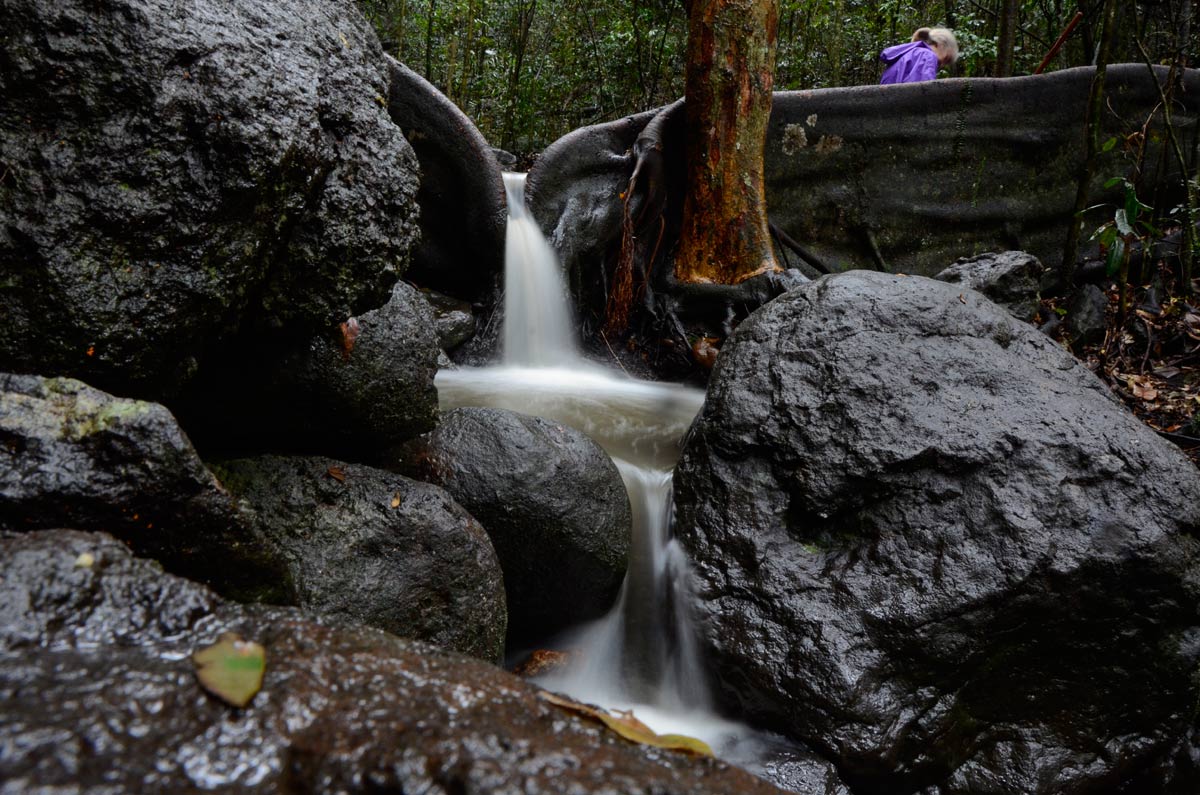
This is a story for our times. This six hectare pocket of rainforest is considered too small to maintain its integrity alone. Tens of millions of years old, it is now an isolated survivor that is co-dependent on human allies for ongoing survival.
Rotary Park Rainforest Reserve is in the heart of Lismore. People come here to enter another world, as we do each week. And each week this magnificent tree draws us to it: we pause in contemplation and wonder at its survival and presence.
Rob Garbutt is Senior Lecturer at Southern Cross University, whose place-based research considers – through words, sounds and images – ways of belonging through a cultural studies and environmental humanities lens. @RobGarbutt
Shauna McIntyre is an early childhood educator for whom place and the relationships within places are the beginning of provocations for learning.


